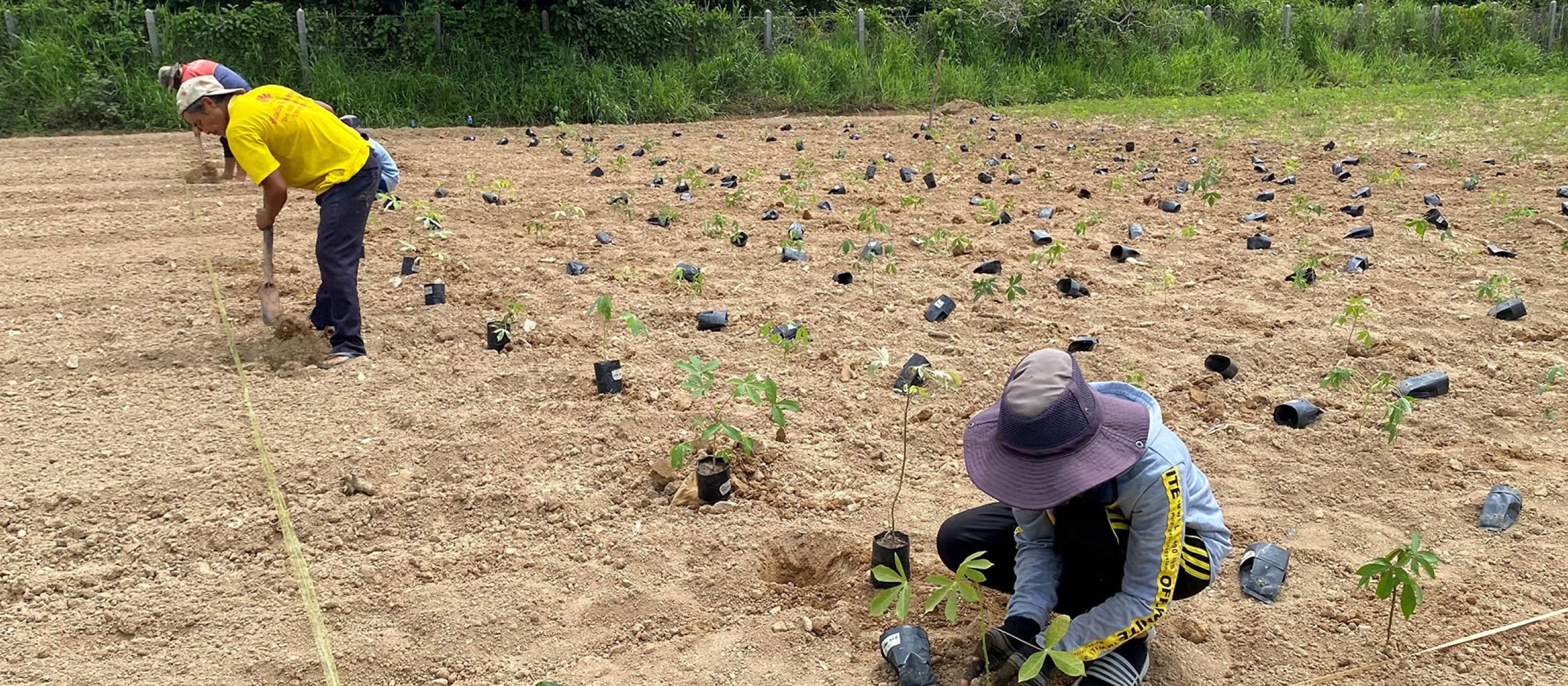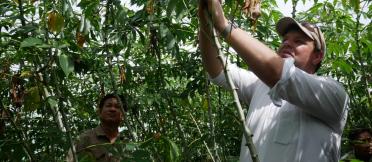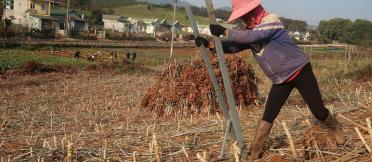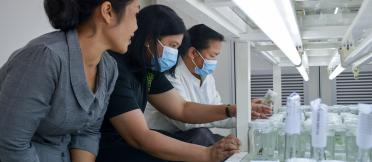- HomeHome
-
About ACIAR
- Our work
- Our people
-
Corporate information
- ACIAR Audit Committee
- Commission for International Agricultural Research
- Policy Advisory Council
- Agency reviews
- Executive remuneration disclosure
- Freedom of information (FOI)
- Gifts and benefits register
- Information publication scheme
- List of new agency files
- Contracts
- Legal services expenditure
- Privacy impact assessment register
- Commonwealth Child Safe Framework
- Benefits to Australia
- Careers
- 40 years of ACIAR
-
What we do
- Programs
- Cross-cutting areas
- Resources
- Where we work
-
Funding
- Research projects
- Fellowships
-
Scholarships
- John Allwright FellowshipScholarships to study in Australia for ACIAR partner country scientists to have Australian postgraduate qualifications
- ACIAR Pacific Agriculture Scholarships and Support and Climate Resilience Program
- Alumni Research Support Facility
- Publications
- News and Outreach
Date released
28 September 2021
Cassava starch—a key ingredient in some of Australia’s favourite foods and consumer products—is increasingly being threatened by rampant diseases in South-East Asia.
Cassava witches broom disease (CWBD) and cassava mosaic disease (CMD) have infected a total of more than 653,000 ha or 24% of the total cassava area across Cambodia, Vietnam, Thailand and Laos. This devastation represents a 105% increase from 2020 and millions of dollars in lost revenue for smallholder farmers.
‘Cassava diseases are continuing to move into new areas and it’s important to get on top of it early and before it gets out of control,’ says Dr Jonathan Newby, an agricultural economist at the International Center for Tropical Agriculture (CIAT.)
Dr Newby is the leader of a project now in its second year which aims to enhance smallholder livelihoods and economic development in mainland South-East Asia. The project is focused on improving the resilience of cassava production systems and value chains by addressing the rapidly evolving disease constraints.
Cassava is a multi-billion-dollar industry and, despite the ongoing COVID-19 pandemic, demand for cassava-based products remains strong, with reductions in some segments offset by growing demand in China.
COVID highlights regional needs
Dr Newby says the project has made ‘significant progress’ over the past year but the situation in each partner country is different. For instance, in Laos the incursion is just getting started so a short-term response focusing on locating small outbreaks and then eradicating the disease is slowing expansion.
In Cambodia the disease is rampant but trials have shown that establishing a crop with disease-free planting material of less susceptible varieties can still generate a ‘very good yield’ if the disease pressure is not too high. The issue is that disease-free stems are becoming hard to find so early disease detection buys researchers and farmers time to adapt.
In contrast, results in southern Vietnam show that if the disease pressure is too high then starting with clean planting material of less susceptible varieties doesn’t solve the problem and farmer incomes and industry suffer as a result. In these cases, disease-resistant varieties become key. Such varieties are now being multiplied in Vietnam and will soon go through multi-location trials throughout the rest of Vietnam, Laos and Cambodia.
Partner countries are benefitting from the importation of disease-resistant cassava varieties that the Nigeria-based International Institute of Tropical Agriculture (IITA) developed in Africa and resistant clones from CIAT’s breeding program in Colombia. This first generation of resistant varieties offers hope to farmers and industry in the hardest hit regions. Of course, in the long run breeding will still be needed to ensure that resistant varieties reach the same pre-disease yield to enable the industry to remain globally competitive.
Crops for income security
As a cash crop, cassava plays a key role in providing food security and income for more than four million smallholder farmers. Often when people think about food systems and food security they’re thinking about being self-sufficient but Dr Newby says that having income from crops like cassava is important to ensure that farmers can purchase other food and necessities. That’s why he and his colleagues are looking into the relationship between COVID-19 and diversified livelihoods among South-East Asia’s rural families.
In Laos and Cambodia a lot of youth migrate to the city or across the border to Thailand to work in factories and the non-farming sector. However, with Thailand’s COVID-19 rates skyrocketing as of late, migrant workers are increasingly returning home, thereby reducing the volume of remittance money earned off the farm. ‘I think in South-East Asia that is one of the biggest impacts of COVID to date: it’s not on agriculture directly, it’s on the non-farm component of livelihoods,’ says Dr Newby.
While what’s happening on the farm is really important, people still need cash. So Dr Newby and his colleagues predict that people who are losing their jobs due to COVID-19 are going to have to harvest their cassava crops early to generate an income needed to support themselves in the short term.
‘It’s a vicious cycle,’ says Dr Newby. ‘If your cassava is now producing half as much due to early harvest and disease, then you need a non-farm job but the non-farm job doesn’t exist anymore.
‘So it’s important that you address these two pandemics that are going on at the same time to ensure that livelihoods remain diversified, not just dependent on the non-farm or farm sector.’
Harvesting cassava early also reduces the viability of stems for replanting. This means farmers may have to seek stems from off-farm to replant in 2022–23, creating additional demand and potentially limiting available material for replanting.
‘This may see further movement of the disease in the absence of a clean seed source and distribution system,’ says Dr Newby.
‘The current situation highlights the importance of agriculture as the livelihood foundation that people can retreat to when things go wrong in the non-farm sector,’ he adds.
‘Maintaining productivity of important cash crops like cassava is going to be critical as countries in the region continue to struggle with the economic consequence and recovery from the COVID-19 pandemic.’
ACIAR project
- Establishing sustainable solutions to cassava diseases in mainland Southeast Asia, AGB/2018/172.






